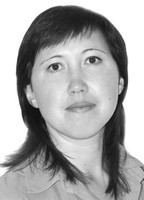Influence of motor mode on physical health of university students
Фотографии:
ˑ:
Teoriya i praktika fizicheskoy kultury №6 2017, pp.24-26
PhD, Associate Professor L.G. Pashchenko1
PhD, Associate Professor О.S. Krasnikova1
1Nizhnevartovsk State University, Nizhnevartovsk
The article presents a study of health indicators in young males studying at the university, differentiated according to the volume of their weekly motor activity - more than 8 hours per week, from 6 to 8, from 2 to 4 hours per week. The highest values of the health index were registered in sporting students, and in young males attending extra-curricular recreational physical education classes, the smallest ones – in young males attending only compulsory physical education classes, as well as in those students engaged in motor activity of increased volume. The detected differences in the physical health indicators stipulate a differentiated approach to the organization and maintenance of the compulsory curricular and extra-curricular forms of physical education of university students. Thus, it should be noted that the low functionality of the body of students, additionally engaged in health-improving physical culture, prevents them from participating in competitive activities, but at the same time, the high level of motivation makes it possible to involve them into participation in competitions by selecting the appropriate means and methods of pedagogical influence, aimed to solve the problem of involvement of students into the mass recreational and sports movement.
Keywords: young males, health index, morphofunctional indices.
References
- Brilliantova O.O. Soderzhanie dvigatelnoy aktivnosti studentov vuzov [Content of university students' motor activity]. Sovremennye obrazovatelnye tekhnologii, 2015, no. 2, pp. 88-92.
- Zagrevskaya A.I. Kontseptualnaya model fizkulturno-sportivnogo obrazovaniya studentov na osnove kineziologicheskogo podkhoda [Conceptual model of university physical culture and sports education based on kinesiological approach]. Fundamentalnye issledovaniya, 2014, 12-10, pp. 2216-2221
- Lubysheva L.I., Zagrevskaya A.I. Integratsiya fizicheskogo i psikhicheskogo razvitiya studentov na osnove kineziologicheskogo podkhoda k ikh fizkulturno-sportivnomu obrazovaniyu [Integration of physical and mental development of students using kinesiological approach to their physical culture and sports education]. Fizicheskaya kultura: vospitanie, obrazovanie, trenirovka, 2016, no. 2, pp. 2-5.
- Naskalov V.M., Mudrov M.Y. Vzaimosvyaz pokazateley zdorovya s kharakteristikami fizicheskoy podgotovlennosti i dvigatelnoy aktivnosti studentov vuzov [Interrelation of health indicators with university students' physical fitness and motor activity characteristics]. Vestnik polotskogo gosudarstvennogo universiteta, 2011, no. 15, pp. 168-174.
- Nifontova O.L., Loginov S.I., Konkov V.Z. Sravnitelnaya otsenka pokazateley kardiorespiratornoy sistemy studentov s raznoy napravlennostyu trenirovochnogo protsessa v usloviyakh Yugorskogo Severa [Comparative assessment of cardiorespiratory indices of students with different orientation of training process in Yugra North]. Teoriya i praktika fizicheskoy kultury, 2016, no. 8, pp. 38-40.
- Pashchenko L.G. Antropometricheskie i somatotipologicheskie osobennosti studentov KhMAO-Yugry [Anthropometric and somatotypological characteristics of KhMAR-Yugra students]. Fizicheskaya kultura: vospitanie, obrazovanie, trenirovka. 2015, no. 4, pp. 60-62.



 Журнал "THEORY AND PRACTICE
Журнал "THEORY AND PRACTICE